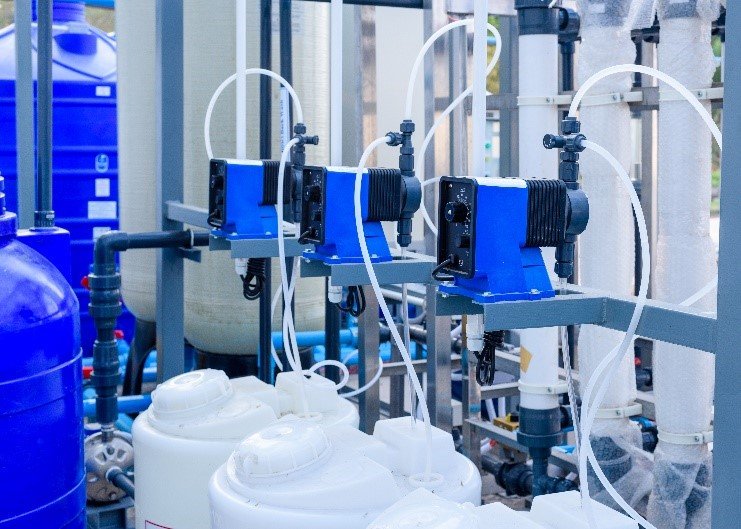North Durham Water Reclamation Facility
North Durham Water Reclamation Facility: A Sustainable Solution for Durham’s Wastewater Management
Located in Durham, North Carolina, the North Durham Water Reclamation Facility plays a crucial role in the city’s wastewater management system. The facility is responsible for treating and reclaiming wastewater generated by the residents and businesses of North Durham, ensuring that clean water is returned to the environment and reducing the strain on natural water resources. In this article, we will explore the operations of the North Durham Water Reclamation Facility, its role in sustainable water management, and its impact on the local community.
History and Overview
The North Durham Water Reclamation Facility, also known as the North Durham WRF, was established in 1994 as part of the Durham County Department of Water Management. The facility was built to meet the growing needs of the North Durham community, which was experiencing rapid urbanization and population growth at the time. The plant was designed to treat an average daily flow of 4.4 million gallons of wastewater, with a peak flow capacity of 12 million gallons per day.
The facility is equipped with state-of-the-art treatment processes that ensure the effective removal of contaminants from the wastewater. These processes include screening, primary clarification, biological treatment, and disinfection. The treated wastewater is then discharged into the Eno River, where it eventually makes its way to Falls Lake, the primary source of drinking water for the city of Durham.
Sustainable Practices
The North Durham Water Reclamation Facility is committed to implementing sustainable practices in its operations to minimize its environmental impact and promote resource conservation. One of the key sustainability initiatives at the facility is the use of renewable energy sources to power its operations. The facility has installed solar panels on its roof and grounds, which generate a significant portion of its electricity needs. This not only reduces the facility’s carbon footprint but also lowers its operating costs in the long run.
In addition to renewable energy, the facility also focuses on resource recovery and reuse. One example of this is the anaerobic digestion process, which converts organic matter in the wastewater into biogas. This biogas is then used to generate heat and power for the facility, further reducing its reliance on traditional energy sources. The leftover biosolids from the digestion process are also treated and repurposed as fertilizer for agricultural purposes, creating a closed-loop system that minimizes waste generation.
Community Impact
The North Durham Water Reclamation Facility plays a vital role in protecting the environment and public health in the local community. By treating and reclaiming wastewater, the facility prevents harmful contaminants from entering the Eno River and Falls Lake, ensuring that these water bodies remain clean and safe for recreation and wildlife. This also helps to safeguard the drinking water supply for the residents of Durham, as contaminated water can pose serious health risks if not properly treated.
Furthermore, the facility actively engages with the local community through educational outreach programs and tours. These programs aim to raise awareness about the importance of wastewater treatment and water conservation, as well as the role of the facility in ensuring a sustainable future for Durham. By fostering a sense of environmental stewardship among residents, the facility contributes to building a more resilient and environmentally conscious community.
Future Developments
As Durham continues to grow and evolve, the North Durham Water Reclamation Facility is poised to undergo further developments to meet the changing needs of the community. One such development is the implementation of advanced treatment technologies to enhance the quality of reclaimed water produced by the facility. This reclaimed water can be used for non-potable purposes such as irrigation, industrial processes, and groundwater recharge, reducing the demand for freshwater resources and promoting water conservation.
Additionally, the facility is exploring opportunities for increasing its capacity and efficiency through infrastructure upgrades and process improvements. By investing in these enhancements, the facility can better meet the wastewater treatment needs of a growing population while maintaining its commitment to sustainability and environmental stewardship. These developments will ensure that the North Durham Water Reclamation Facility remains a vital asset for the community for years to come.
In conclusion, the North Durham Water Reclamation Facility plays a critical role in Durham’s wastewater management system, providing essential services to protect the environment and public health. Through its sustainable practices, community engagement, and future developments, the facility is poised to continue its mission of promoting water conservation and resource recovery in the years ahead. As a leading example of sustainable water management, the facility sets a precedent for other communities to follow in their efforts to build a more resilient and sustainable future.
Sources:
1. City of Durham – North Durham Water Reclamation Facility: https://durhamnc.gov/217/North-Durham-Water-Reclamation-Facility
2. Sustainability in Wastewater Management: https://www.epa.gov/sites/default/files/2016-10/documents/sustainable_infrastructure_evaluation_framework_fact_sheet_508_10_12_15.pdf

